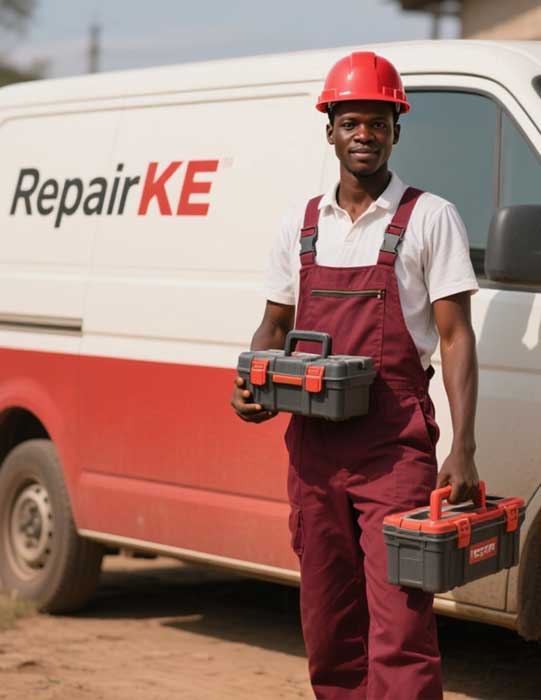
Replacing a refrigerator compressor is a complex task that requires technical expertise, specialized tools, and a focus on safety. By understanding the process, recognizing the signs of a failing compressor, and following proper replacement steps, you can restore your refrigerator’s functionality and extend its lifespan. For most homeowners, hiring a professional technician from a trusted service like Repair.co.ke ensures the job is done efficiently and safely, saving you time and potential costly mistakes.
The compressor is the heart of your refrigerator, responsible for circulating refrigerant and maintaining the cooling process. When it fails, your fridge may stop cooling, leading to spoiled food and inconvenience. This article, brought to you by Repair.co.ke, provides a comprehensive guide to refrigerator compressor replacement, covering signs of failure, the replacement process, and why professional assistance is often the best choice.
Signs Your Compressor Needs Replacement
A failing compressor exhibits several telltale signs. Look out for:
- No Cooling: The fridge or freezer compartments are warm despite the unit running.
- Unusual Noises: Loud clicking, buzzing, or grinding sounds from the back of the fridge.
- Overheating: The compressor feels excessively hot to the touch.
- Frequent Cycling: The fridge turns on and off more often than usual.
- High Energy Bills: A struggling compressor consumes more power, increasing electricity costs.
If you notice these symptoms, it’s time to consider a compressor replacement. However, diagnosing the issue accurately often requires professional tools like a multimeter to test the compressor’s electrical components.
Tools and Materials Needed
Replacing a compressor is a technical job that demands specific tools and materials:
- Replacement Compressor: Must match your refrigerator’s model and specifications.
- Wrench Set: For loosening and tightening bolts.
- Tubing Cutter: To cut refrigerant lines cleanly.
- Welding Torch: For brazing new refrigerant lines.
- Vacuum Pump: To remove air and moisture from the system.
- Refrigerant and Charging Scale: To refill the system with the correct refrigerant type and amount.
- Safety Gear: Gloves, goggles, and a fire extinguisher for handling refrigerants and welding.
Always ensure you have the correct compressor model, as mismatches can lead to inefficiencies or further damage.
Step-by-Step Compressor Replacement Process
Replacing a refrigerator compressor involves several precise steps. Note that this process is best handled by trained professionals due to the risks involved, such as refrigerant leaks or electrical hazards.
- Unplug the Refrigerator: Disconnect the power supply to avoid electrical shocks.
- Access the Compressor: Remove the back panel of the fridge to locate the compressor, typically at the bottom rear.
- Recover Refrigerant: Use a recovery machine to safely remove and store the old refrigerant, as venting it is illegal and harmful to the environment.
- Disconnect the Old Compressor: Unsolder the refrigerant lines and detach electrical connections. Remove mounting bolts to free the compressor.
- Install the New Compressor: Secure the new compressor in place, reconnect electrical wiring, and braze new refrigerant lines.
- Evacuate the System: Use a vacuum pump to remove air and moisture from the refrigerant lines.
- Charge the System: Add the correct amount of refrigerant using a charging scale, following the manufacturer’s specifications.
- Test the Refrigerator: Plug in the fridge and monitor for proper cooling and compressor operation.
- Reassemble and Clean Up: Replace the back panel and ensure the workspace is tidy.
Safety Precautions
Compressor replacement involves handling refrigerants, high-voltage components, and welding equipment. Key safety tips include:
- Wear Protective Gear: Gloves and goggles protect against refrigerant burns and debris.
- Work in a Ventilated Area: Prevent inhalation of refrigerant fumes.
- Follow Refrigerant Regulations: Ensure proper recovery and disposal to comply with environmental laws.
- Avoid Electrical Hazards: Double-check that the fridge is unplugged before starting work.
Why Choose Professional Services?
While DIY compressor replacement is possible for those with technical skills, it’s not recommended for most homeowners. Professional technicians from Repair.co.ke offer:
- Expertise: Trained to handle complex refrigeration systems and diagnose issues accurately.
- Specialized Tools: Access to recovery machines, vacuum pumps, and precise welding equipment.
- Warranty Protection: Many services provide guarantees on parts and labor.
- Time and Cost Efficiency: Avoid mistakes that could damage your fridge or require costly repairs.
Maintenance Tips to Prolong Compressor Life
After replacement, maintain your compressor to ensure longevity:
- Clean Condenser Coils: Dust buildup forces the compressor to work harder. Clean coils every 6 months.
- Check Door Seals: Worn gaskets let warm air in, straining the compressor.
- Avoid Overloading: Don’t overfill the fridge, as it restricts airflow.
- Keep Vents Clear: Ensure the fridge has enough space around it for ventilation.
By following these tips, you can minimize wear and tear on your new compressor and keep your refrigerator running smoothly.
For expert compressor replacement and refrigerator repair services, contact Repair.co.ke today. Our skilled technicians are ready to restore your fridge to peak performance.




